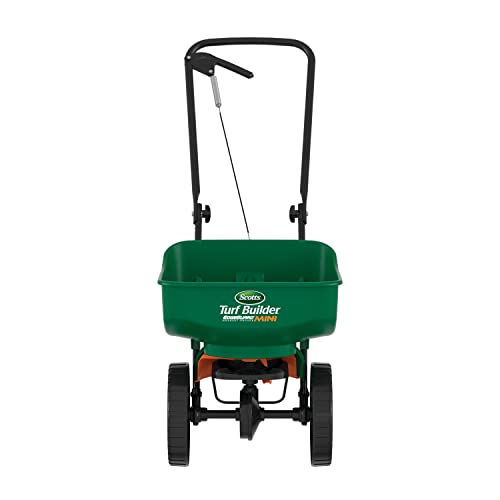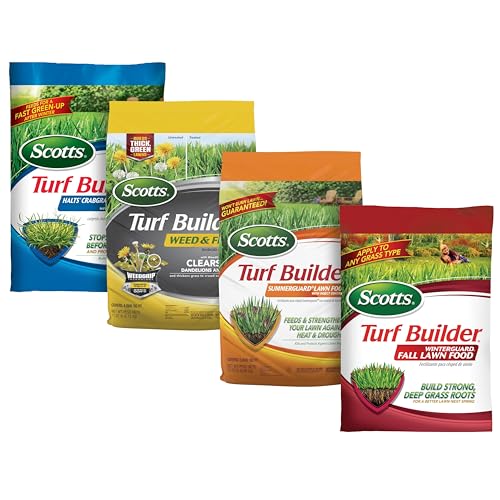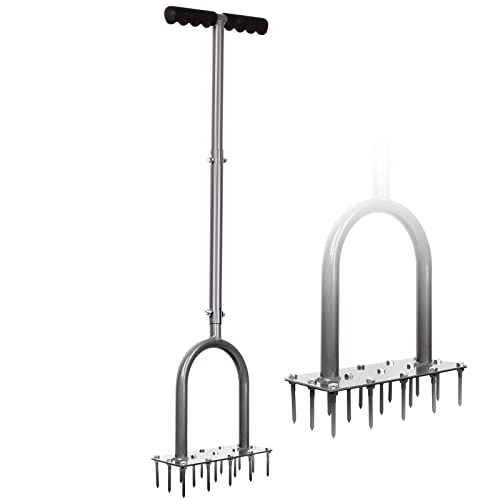October is a crucial month for lawn care, but it's not one size fits all – the dos and don'ts according to your hardiness zone
What to do in the warmer, cooler, and transition zones for a healthy lawn
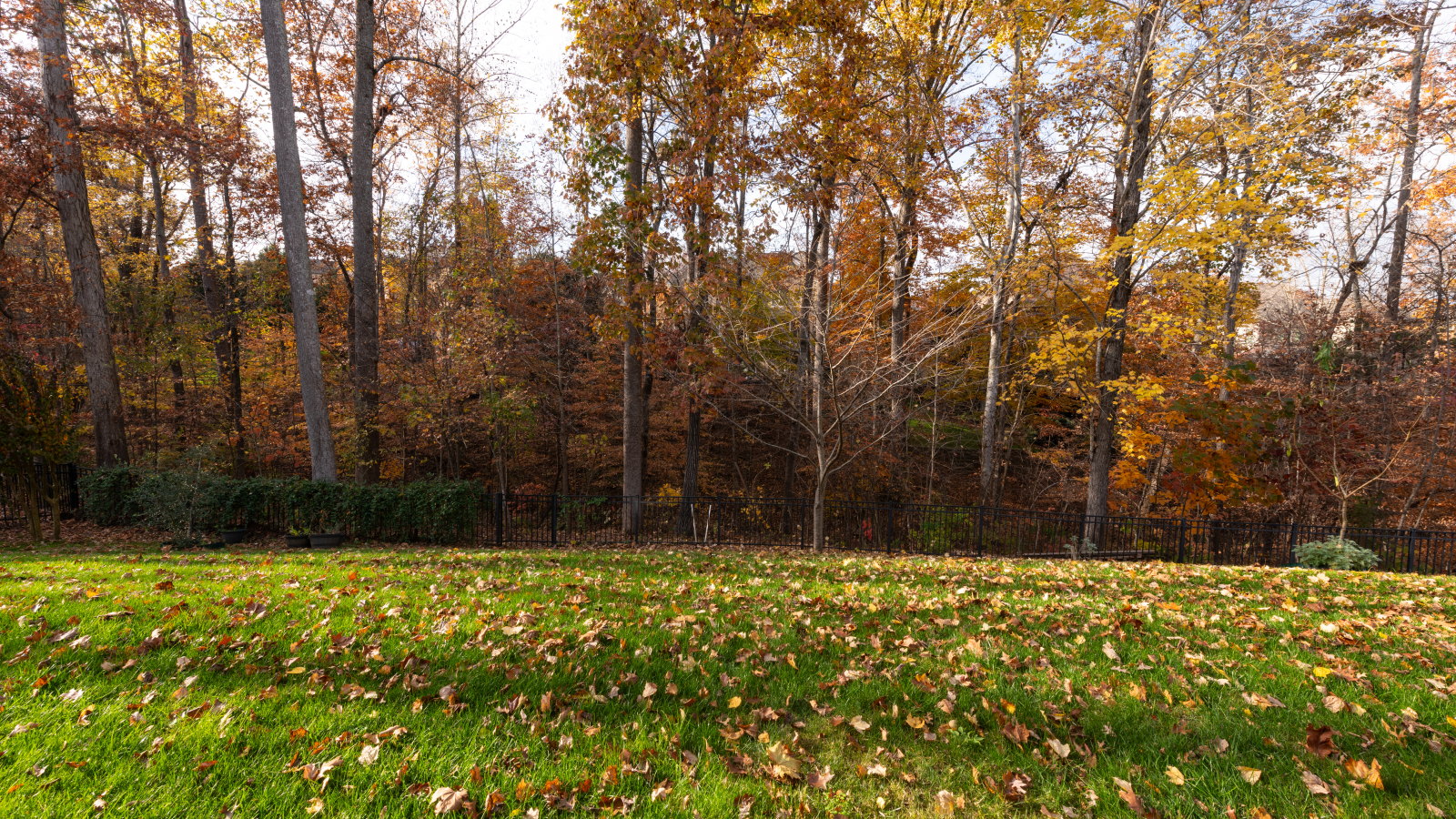

October is a prime time to give your lawn some attention, but it is not a standard approach across the country. The best way to plan your October lawn care will depend on your location and the type of grass you have.
Warm-season grasses are suited to hotter climates, while cool-season grasses prefer (yes, you guessed it) cooler temperatures found in northern regions. Then you also have a transition zone in the middle, where both types of grasses can be planted. The growth cycle of different grass types will affect your fall lawn care.
When planning your lawn care tasks for October, understanding the makeup of your lawn is crucial. It dictates which tasks you should do, and what you shouldn't. Here we look at October lawn care across the different zones, including which jobs are a must for all gardeners this month and those that differ based on your grass.

October lawn care in focus – let’s start with 1 essential task for all
Wherever you live, collecting leaves from a lawn is a prerequisite. When the leaves fall in the fall, they block sunlight when left on a lawn, causing bare patches while also trapping moisture and inviting lawn diseases.
Whatever your preferred method for getting rid of leaves, whether a leaf blower or a rake for a more physical workout, always collect leaves and use them to make leaf mold or compost.
Leaf collecting is a must, no matter where you live or the type of grass. But other aspects of October lawn care do differ depending on those factors. So, let's look at the crucial October lawn care jobs for warmer and cooler zones.
October lawn care – What to do in warmer zones

Warm-season grasses, such as zoysia grass or Bermuda grass, go dormant when the soil temperatures consistently drop below 55-60°F in the fall. Your October lawn care is designed to help the grass as it winds down for the season and stops growing during this month or next, depending on your climate and location.
Design expertise in your inbox – from inspiring decorating ideas and beautiful celebrity homes to practical gardening advice and shopping round-ups.
- Mow – Keep mowing the lawn until it stops growing. The growth of warm-season grasses will slow when temperatures are in the 60s, but not stop completely until it goes under the 60°F mark. Monitor your grass and local weather forecasts to gauge when to give the lawn its final mow of the year, which can be as late as November. To maintain the health of your lawn, raise the cutting height in the fall and don't mow wet grass. Raise the cutting deck to 2.5 to 3 inches to leave longer grass blades that can insulate the roots during winter. This tactic also helps combat the risk of winter fungal diseases, including snow mold.
- Weed – Fall can be an efficient time to kill weeds and prevent future ones. Removing weeds before they seed prevents their spread, and they will compete with the grass as it begins to grow in spring. The best way to kill weeds but not grass is to remove them by hand. It may not sound appealing, but it is effective. It need not be back-breaking, though, as a weed puller tool like this one on Amazon allows you to remove weeds without bending or kneeling. To stop cool-season annuals like henbit, chickweed, and poa annua, you can apply pre-emergent herbicides in October. Such products prevent winter annual weeds from sprouting.
- Water – Depending on your climate and the local weather patterns, you may need to continue watering the lawn into fall. Warm-season grasses need 1-1.5 inches of water per week during this time of year. If this cannot be achieved thanks to natural rainfall, you may need to use your irrigation system or head out with a garden hose to keep your lawn hydrated. Giving the grass the moisture it craves helps it recover from the stress of hot summers. It also helps to repair any patches in the lawn, and means the grass stores enough energy in its roots to survive winter. A soil moisture meter like this one on Amazon can quickly provide key information on soil temperature and moisture levels. It will help gauge when to water grass and also give you an idea of when the grass will start to go dormant when the soil temperatures drop. Avoid overwatering the lawn (a common lawn watering mistake) as the cooler temperatures of fall reduce evaporation. And keep an eye on the forecasts to stop watering the lawn in fall ahead of the first hard freeze.
- Overseed with ryegrass – If you have bare patches in the grass, you can overseed warm-season lawns in the early weeks of October. Doing it earlier is required as the soil temperature needs to be at least 65°F for strong germination. Warm-season grasses are suited to seeding in spring, but to provide year-round color, you can overseed with ryegrass in the fall. This fast-growing grass seed germinates quickly and can add winter color to lawns in southern climates. It is a short-lived grass, but it can provide that desirable green over winter before dying back when the rest of the lawn comes back to life. You can get bags of annual ryegrass seed at Walmart to overseed your lawn in the fall. Plant the seeds using a spreader or by hand six weeks before your first frost and water frequently until it is established.
October lawn care – What to do in cooler zones
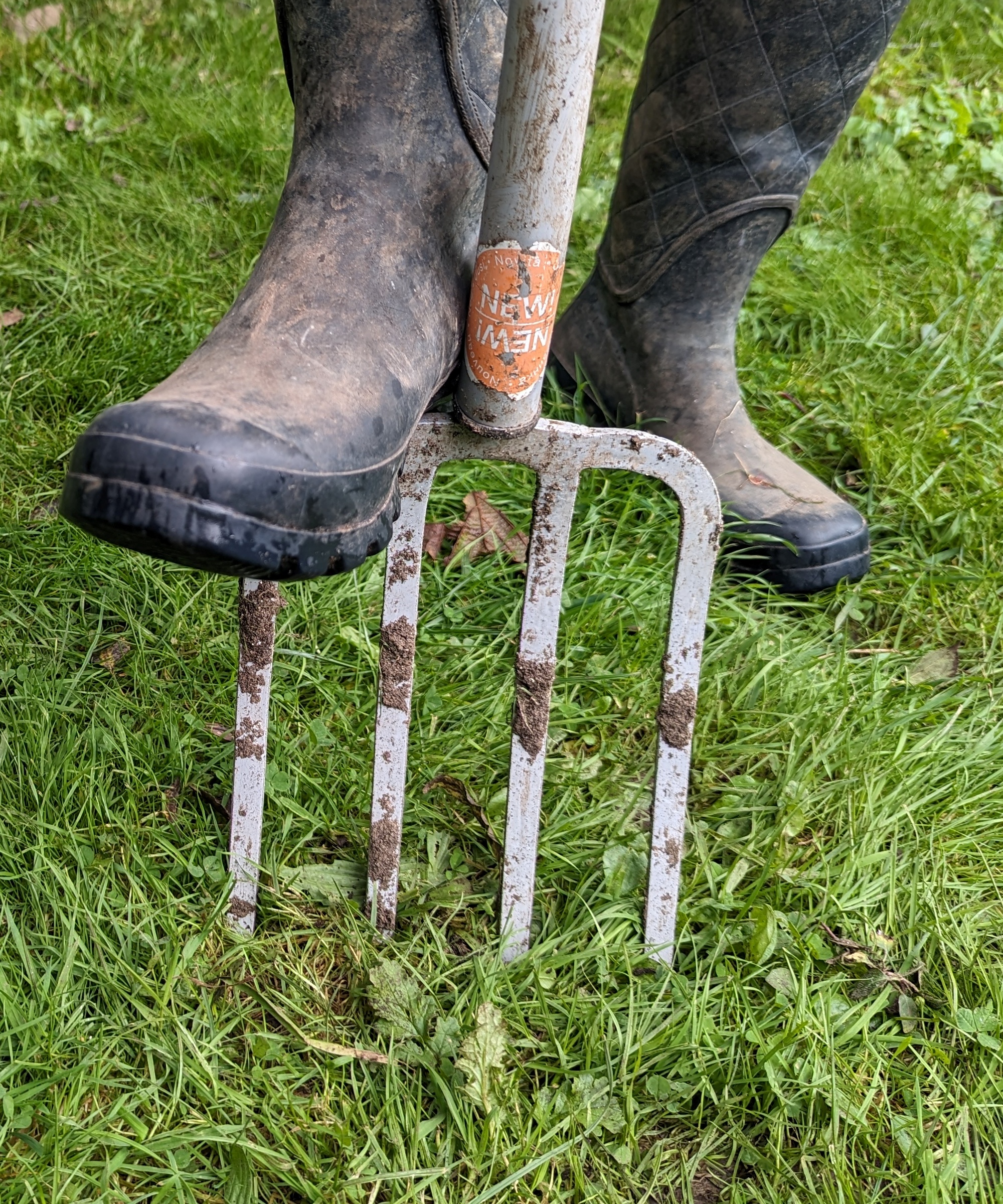
Cool-season grasses like Kentucky bluegrass, tall fescue, fine fescue, and perennial ryegrass are more suited to cooler northern climates. These grasses go dormant when the soil temperatures fall below 45°F. Good October lawn care for cool-season grasses helps it recover from the summer usage and develop strong roots to keep the grass stronger for next year.
Mowing, weeding, and watering as required are also essential October lawn care jobs for cool-season grasses. However, there are also other tasks to add to your fall gardening checklist when dealing with these grasses.
- Fertilize – October is a crucial time to fertilize a lawn and strengthen your cool-season grasses. Applying a tailored feed in the fall encourages strong root growth, preparing the lawn for the incoming winter. The key is to use the right type of fertilizer, which is a feed higher in potassium and phosphorus. These essential plant nutrients help support root development and provide the strength needed to survive winter and grow strongly come spring. An example of one such product is this winter survival fall lawn food at Walmart. If you wonder how often you should fertilize a lawn, feeding 3-4 times a year is the maximum, and a fall feed is the last of the year. Cool-season grasses want this fall feed, while August or September is the best window for a final feed of warm-season grasses. Avoid using summer lawn feeds that are high in nitrogen in the fall. This encourages fresh, lush growth that will be damaged by the winter cold.
- Aerate – Cool-season grasses can benefit from aerating in the fall to reduce compaction and boost root growth, as the holes in the lawn created by aeration allow for improved air, water, and nutrient penetration. It is a useful task to do before other tasks, as there are benefits that come with aerating a lawn before fertilizing or seeding. As for how to aerate a lawn, it can depend on the size of your space. A small lawn can be aerated easily with a garden form, while a mechanized lawn aeration machine may be needed for large lawns. A good time to aerate is when the soil is damp (which makes it easier for the spikes to penetrate), but not when it is waterlogged or frozen (both of which will make a mess and damage the grass).
- Overseed with cool-season grass seed – Early to mid-October offers the opportunity to overseed with cool-season grasses as the soil is warm from summer, and there is often good seasonal moisture to aid germination. Sowing this month is dependent on warmer falls as the seeds want at least 4-6 weeks until the first heavy frost. Plant grass seed earlier in the month and keep it moist until the frosts arrive. You can cover the newly-seeded area with horticultural fleece or germination sheets to retain warmth and stop birds from eating grass seed. Get it right and the new grass can develop roots before the winter frosts arrive. This helps the lawn withstand winter weather and be strong enough to cope with hot, dry spells next summer.
October lawn care – What to do in transition zones
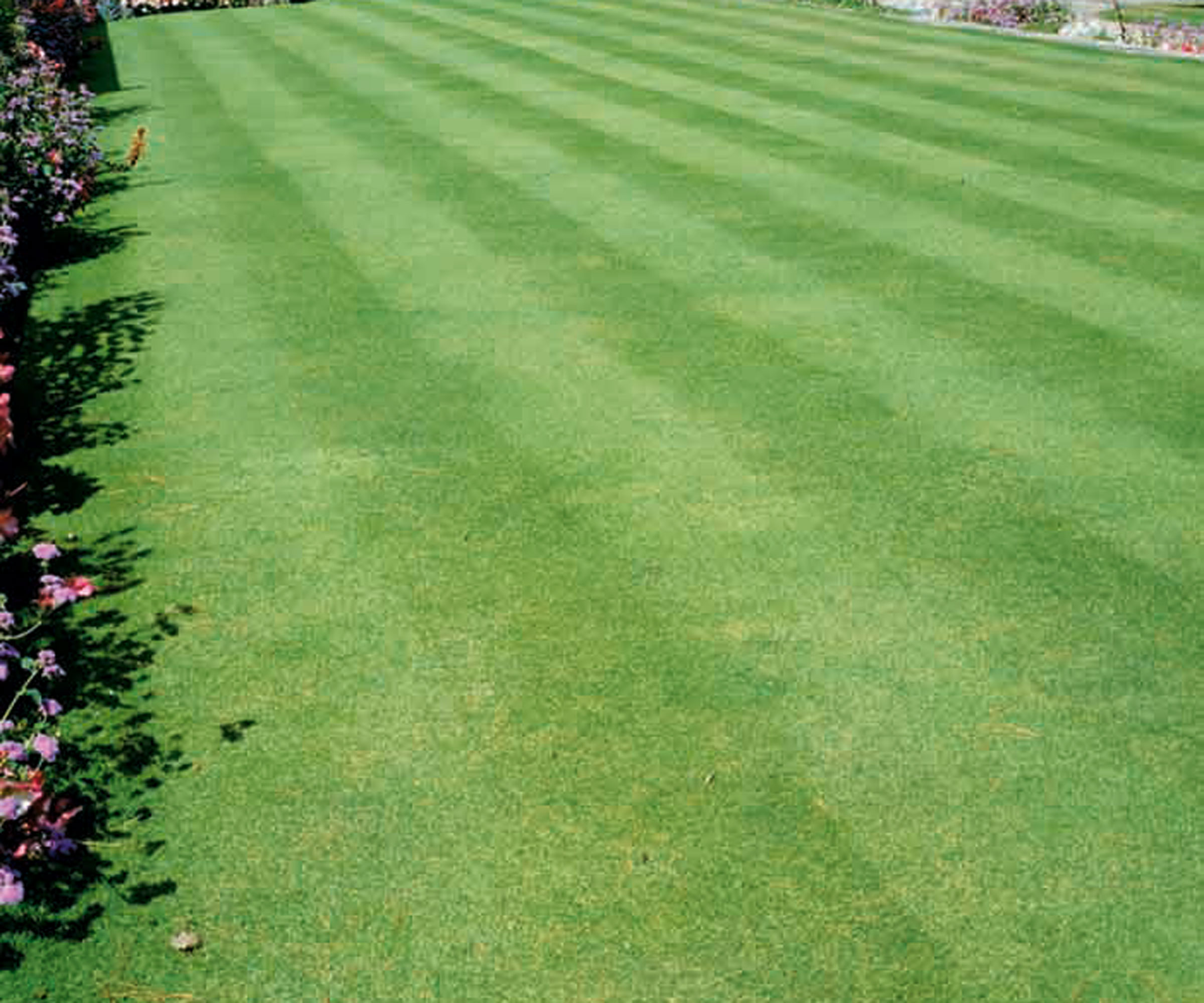
The transition zone is an area where you can grow either warm-season or cool-season grass. Before making plans for October lawn care, understand the types of grass you have in your lawn, and tailor your approach accordingly.
As mentioned earlier, for both types, you should mow, water, weed, and remove leaves. However, only fertilize and aerate if you are dealing with cool-season grasses.
Potentially, the trickiest aspect comes when lawns in this zone are a mix of grasses, such as a warm-season base overseeded with cool-season grasses. The safest way to approach this is to keep mowing at a higher height, water as required, and remove weeds and leaves. But avoid fertilizing until spring and leave other maintenance tactics like scarifying and aerating until then, too.
Once the grass goes dormant, it should be left alone for the rest of the fall and winter. There are many winter lawn care mistakes to avoid making during the coldest season, but maybe the biggest is walking on frozen grass. Many people will do this without thinking about the consequences, but treading on a frozen lawn can damage the grass blades, cause bare patches, and compact the soil.
Shop tools for October lawn care

Drew has worked as a writer since 2008 and was also a professional gardener for many years. As a trained horticulturist, he worked in prestigious historic gardens, including Hanbury Hall and the world-famous Hidcote Manor Garden. He also spent time as a specialist kitchen gardener at Soho Farmhouse and Netherby Hall, where he grew vegetables, fruit, herbs, and cut flowers for restaurants. Drew has written for numerous print and online publications and is an allotment holder and garden blogger. He is shortlisted for the Digital Gardening Writer of the Year at the 2025 Garden Media Guild Awards.
You must confirm your public display name before commenting
Please logout and then login again, you will then be prompted to enter your display name.
